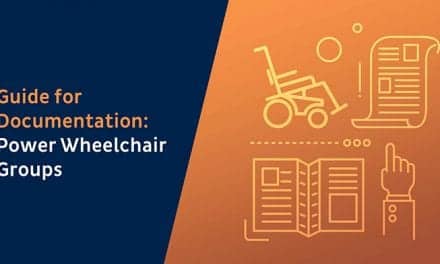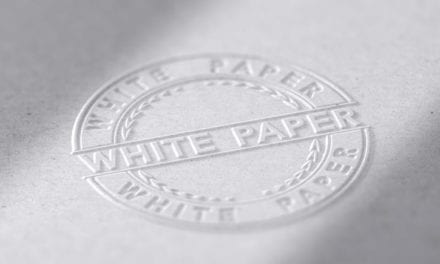Exploring trajectories in functional recovery for patients who are undergoing rehabilitation post-total knee arthroplasty.
Total knee arthroplasty (TKA) is a very common elective orthopedic surgery in which the primary indicator for surgery is debilitating pain. This joint pain is most commonly secondary to osteoarthritic changes in the joint. The procedure involves removing the damaged articular surfaces of the knee and replacing them with metal and polyethylene prosthetic components. The number of TKAs in the United States is expected to increase by 673% by 2030.1 The goals of this surgery include pain reduction, improved mobility, and the return to previously enjoyed functional activities. Postoperative rehabilitation focuses on these goals and physical therapy is a critical component of full recovery following TKA.
Many patients are not fully prepared for the length of time and progression of phases needed for full recovery following TKA. In many cases, the preoperative pain that led to surgical intervention is moderately alleviated immediately postoperatively, yet is replaced by a different type of pain due to the physical trauma of replacing a joint. Patients should be advised that while they can expect to return to most activities within 4 to 6 months, the healing process extends to at least one full year of recovery. Tissue remodeling begins around 4 weeks postoperatively and can last for up to 2 years. Diligence and commitment to an exercise program throughout the process is key for patients to achieve the best outcomes.
MANAGING PAIN THROUGH THE REHAB CONTINUUM
The early stages of rehabilitation focus on pain management, gait training, mobility, and neuromuscular reeducation. The acute inflammatory stage of healing occurs in the first 24 to 48 hours, although inflammation around the knee joint continues well beyond this point. Pain is an anticipated side effect of any surgery and needs to be managed in order to progress with therapy. Throughout the continuum of recovery, a number of modalities may be appropriate for nonpharmacological pain relief, including hot/cold therapies, electrical stimulation, low level laser therapy (LLLT), and topical analgesics.
In the first few weeks following TKA surgery, compression and ice may be used to help reduce the swelling around the joint and to decrease pain. Edema can inhibit muscle activation around the knee, particularly the quadriceps muscle. Even a small amount of fluid has been shown to decrease activation. Elevation of the lower extremity can help with this edema, while ice or cold therapy products may work as a great modality in the reduction of inflammation. In some cases, LLLT may also be appropriate for reducing pain and swelling post-surgically. As patients progress further through recovery, some may find topical analgesics helpful in controlling pain, and these products are easily used in the clinic or at home. Instrument-assisted soft tissue mobilization may also provide an option for manipulating tissue to reduce scarring, control pain, and improve flexibility in joints and muscles.
MOVEMENT AS MEDICINE
Gentle movement and muscle activation also may assist in decreasing pain. Therapists will encourage patient movement to promote circulation and employ the gate control theory of pain. Common activities include glute sets, quad sets, ankle pumps, and heel slides. These activities get the body moving and assist in “pumping” fluid to be reabsorbed by the lymphatic system.
Reactivation of the quadriceps muscle is another early focus in the first weeks following TKA. Swelling and pain may both contribute to the inhibition of this muscle contraction. Failure of quadriceps activation contributes substantially to the weakness present both before and after surgery. These activation deficits have been found to be twice as poor 1 month following TKA.2 Quad control is important for proper gait mechanics, and weight-bearing activities and full contraction also contribute to end range knee extension—a critical range of motion to achieve following surgery. In addition to simple exercises to focus on this contraction, physical therapists may utilize electrical stimulation to assist in the return of a strong quadriceps contraction. The electrical stimulation activates the muscle contraction and allows the patient to attain a stronger contraction by working with the current.
AQUATIC THERAPY
Aquatic therapy can be extremely beneficial following surgery and patients may initiate this treatment approach once the scar has healed and stitches are removed. The hydrostatic pressure of the water helps to reduce swelling in joints while the buoyancy of the water contributes to reduced joint compression forces with weight-bearing activities. Patients are able to progress fairly quickly with proper gait mechanics because they experience less pain and discomfort when walking underwater. This is primarily related to the decreased percentage of weight bearing through the joint in the pool. For example, standing statically waist deep reduces weight bearing to 56% while standing chest deep decreases weight bearing to 30%. These percentages increase during fast walking in the water to 75% and 50%, respectively, due to increased ground reaction forces during walking.3
Resistance can be added to exercises by utilizing ankle weights, although the water provides some natural resistance to movement. Water turbulence is another method of adding resistance as well as the depth of immersion to change the percentage of body weight through the joints.4 An underwater step allows patients to focus on proper mechanics and muscle activation going up or down stairs.
REBUILDING STRENGTH AND ENDURANCE
The restoration of mobility to the knee joint following TKA is a focal point throughout all stages of rehabilitation and begins immediately after surgery. While physical therapists will focus on both knee flexion and knee extension, it is the ability to fully straighten the knee that has the greatest functional impact. Full knee extension is required for normal gait mechanics, specifically during the first phase of weight bearing (heel strike). Patients are encouraged to stretch into end ranges as tolerated as part of a daily routine with prescribed home exercises. A stationary bike is an excellent way to gently increase and maintain range of motion. Additionally, active assisted exercises can help to improve mobility.
The incorporation of medical exercise therapy (MET) into a patient’s rehabilitation program will help to reduce pain, restore mobility, and retrain proper muscle activation patterns. This approach allows patients to perform pain-free complex functional movement patterns at an early stage through unloading of the joint.5 Therapists will utilize a pulley system that provides even resistance throughout full range of motion and instruct a patient with a specific activity. Medical exercise therapy includes low resistance and high repetitions through functional movements.
Manual techniques are often employed by the physical therapist to restore range of motion to the joint. These may include joint mobilizations, stretching, and soft tissue mobilization including scar massage. Scar tissue will develop in the area of the incision and has the potential to limit mobility if it is not addressed. The scar needs to be remodeled in order to tolerate the stress and forces that the body may encounter throughout daily activity. Instrument-assisted cross fiber massage has shown good efficacy in the literature to break up scar tissue and restore normal soft tissue mobility.6 While massage can be performed effectively without instrument assistance, there are times when the scar tissue is thick and may benefit from treatment utilizing this skilled technique.
BACK ON TWO FEET
Most times, patients utilize an assistive device immediately following TKA. This can be a rolling walker, axillary crutches, or a cane. No matter what assistive device is being utilized, physical therapy will aim to progress to ambulation without an assistive device and demonstrating normal gait mechanics. This would include symmetrical step length, equal time spent on each foot throughout ambulation, and no compensatory strategies. This is achieved by a good deal of cueing and feedback from the therapist, but the use of a mirror can also be helpful to personally witness the compensations and make appropriate corrections.
Throughout rehabilitation, it is important for patients to regain a sense of balance and proprioception through the involved lower extremity. This includes control around the ankle, knee, and hip. Patients may expect to engage in many different single leg activities on a firm surface as well as an unstable surface. Progression may include the use of a therapy ball that has one flat side, which patients can use to step on during lunges or other exercises to challenge balance and muscular control.
All throughout rehabilitation, strength will be addressed through a variety of exercises and functional activities. Initial exercises in the first month following surgery may include open chain activities and light resistance such as bands or ankle weights to challenge the strength of the lower extremity including muscles around the hip, knee, and ankle. The therapeutic exercise guidelines for older individuals suggested by the American College of Sports Medicine may be applied to recipients of TKA. The guidelines recommend progressive resistive training of major muscle groups 2-3 times per week, and aerobic training 3 times per week for 30-40 minutes.2 Patients can generally expect to progress to a more strength-oriented exercise protocol 4 to 6 months post-op. This is the point where patients are typically able to begin returning to previous levels of activity including more strenuous work environments.
Knee replacement is not a choice for all patients as a solution to lower extremity impairment. Some may be overwhelmed by the lengthy rehabilitation process, while others may be concerned about the risks associated with major surgery. In these cases, bracing may help an individual remain functional while potentially deferring or avoiding surgery. For example, a recent study determined that an ankle-foot orthosis (AFO) offered a novel conservative treatment for knee osteoarthritis by reducing the load in the medial knee compartment.7 For patients who are left with weakness in the lower extremities, a molded ankle-foot orthosis (MAFO) or knee orthosis (KO) can help control alignment and compensate for muscle weakness. Lower extremity braces that provide functional electrical stimulation (FES) have also demonstrated the capacity for strengthening muscles and reducing pain.8 Several models of knee orthoses are available to help patients improve knee alignment and relieve pain by unloading the joint during weight-bearing activities. The use of these braces may be guided by a physician or by the physical therapist during treatment for knee osteoarthritis.
PERSISTENCE PAYS OFF
While it is undoubtedly a painful and long process, the benefits of a TKA and persistence through the full course of rehabilitation lead to substantial improvements in quality of life. It is extremely important for patients to adhere to a consistent physical therapy program and to be mindful that active involvement in the rehabilitation process correlates with positive outcomes. RM
Lindsay Holmes, PT, DPT, MTC, OCS, practices and manages Gaylord Physical Therapy Orthopedics and Sports Medicine in North Haven, Conn. A graduate from Quinnipiac University, she has been a licensed physical therapist for more than 10 years, and also works as faculty for the University of St. Augustine in the flexible physical and occupational therapy programs. For more information, contact [email protected].
References:
1. Kurtz S, Ong K, Lau E, et al. Projections of primary and revision hip and knee arthroplasty in the United States from 2005 to 2030. J Bone Joint Surg Am. 2007;89:780.
2. Meier W, Mizner R, Marcus R, et al. Total knee arthroplasty: muscle impairments, functional limitations, and recommended rehabilitation approaches. JOSPT. 2008;38(5):246-256.
3. Harrison R, Bulstrode S. Percentage weight-bearing during partial immersion. Physiother Pract. 1987;3:60-63.
4. Hinman R, Heywood S, Day A. Aquatic physical therapy for hip and knee osteoarthritis: results of a single-blind randomized controlled trial. Phys Ther. 2007;87:32-43.
5. Medical Exercise Therapy. Norwegian MET Institute, 1996.
6. Hammer W. The effect of mechanical load on degenerated soft tissue. J Bodywork Movement Ther. 2008;12(3):246-256.
7. Fantini Pagani CH, Willwacher S, Benker R, Brüggemann GP. Effect of an ankle-foot orthosis on knee joint mechanics: a novel conservative treatment for knee osteoarthritis. Prosthet Orthot Int. Published online before print. December 10, 2013.
8. Doucet B, Lam A, Griffin L. Neuromuscular electrical stimulation for skeletal muscle function. Yale J Biol Med. 2012;85(2):201-215.





